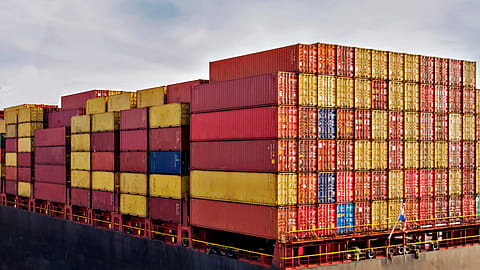U.S. tariffs could hit India’s food, textiles and pharma exports: Moody's
India has a lower overall exposure relative to most others in the Asia Pacific region, although certain sectors such as food and textiles as well as pharmaceutical products face risks, says Moody's.

U.S. President Donald Trump’s efforts to equalise tariff rates could either result in higher U.S. tariffs or lead to other countries lowering their own, according to Moody’s Ratings.
India has a lower overall exposure relative to most others in the Asia Pacific region, although certain sectors such as food and textiles as well as pharmaceutical products face risks, the rating agency said.
The U.S. runs trade deficits relative to many APAC economies, including India. United States' goods trade deficit with India was $45.7 billion in 2024.
Across APAC, developing countries like India, Vietnam and Thailand have among the widest rate differentials relative to the U.S.
Most companies in Moody’s rated portfolio are domestic focused with limited exposure to the U.S. market. “To mitigate pressure from reciprocal tariffs, the US and India are reportedly now in talks for India to lower import tariffs on select US products, increase market access for US farm products and increase US energy purchases, while seeking to initiate a trade deal by the fall of 2025,” says Moody’s.
Indian steel producers also face increased challenges in exporting their products as U.S. President Donald Trump announced plans to impose 25% tariffs on steel and aluminium imports, Moody’s said earlier this month.
After meeting Prime Minister Narendra Modi at the White House, Trump said that the U.S. wants a level playing field to bring down its trade deficit with India, announcing a new energy deal that will pave the way for more oil and gas exports from the U.S. to India. The energy agreement will make the U.S. the largest supplier of oil and gas to India, Trump said.
Recommended Stories
Trump slammed India for charging the highest tariffs anywhere in the world during his joint press conference with PM Modi. "I don’t blame them. It’s a different way of doing business. It’s very hard to sell in India because they have trade barriers and very strong tariffs. We are right now a reciprocal nation. Whatever India charges, we are going to charge them," Trump said, adding that’s fair for the people of the United States and India.
The U.S. President said the two countries will strengthen economic ties and bring “greater fairness and reciprocity” to their trading relationship. Trump said the two leaders have agreed to begin negotiations to address long-running disparities that should have been taken care of over the last four years.
According to Moody’s, reciprocal tariffs will have an impact on a number of key sectors in APAC with exposure to U.S. final demand, such as computer and electronic products, chemicals, motor vehicles, as well as food, textiles and wood products. ASEAN economies generally have significant exposure in the computer and electronics sector given their high degree of integration with the global electronics supply chain.